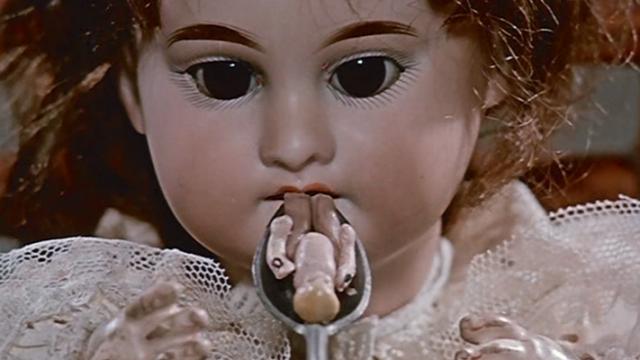Jabberwocky – aka “Zvahlav aneb Saticky Slameného Huberta” (1971) dir. Jan Švankmajer
Alice in Wonderland is a flexible document. The whimsical book ostensibly for children has retained its appeal, or at least marketability, to kids while adapting well to adult concerns. To an alarming swath of adult concerns. Over the years the Alice books have been plucked from the public domain to serve as the basis of a few star-studded features, a grimdark video game, and even a musical porno.
Czech surrealist animator Jan Švankmajer did his own feature-length Alice in 1988. Seventeen years prior he used the pome “Jabberwocky” from Through the Looking Glass as a starting point for some of his characteristically dark whimsy.
Does anybody else crack up every time the cat knocks over the blocks?
Ben Hjorth in this Senses of Cinema essay observes the matching form and content, how the nature of stop-motion technique itself (the “snicker-snack of jump-cut animation”) imbues the images with an inherent violence that can be sensed even before it’s demonstrated. Švankmajer’s eye for the sharp edges surrounding everyday objects makes him a natural companion to Carroll. “Jabberwocky” the film creates a world familiar on the surface and yet irrational and threatening in substance.
“Jabberwocky” as a depiction of the time of dawning adulthood and the replacement of innocence with guilt and grief is the popular interpretation. And it’s a logical one, if the word can be applied to any aspect of this exercise. But on the other hand, why must the adult world have a monopoly on creeping terror? Rare is the child who hasn’t had a doll look at them funny, or felt a pang of fear for a toy soldier on the brink of destruction by firecracker. Dancing clothes and cannibal dolls are the substance of children’s games and nightmares equally.

